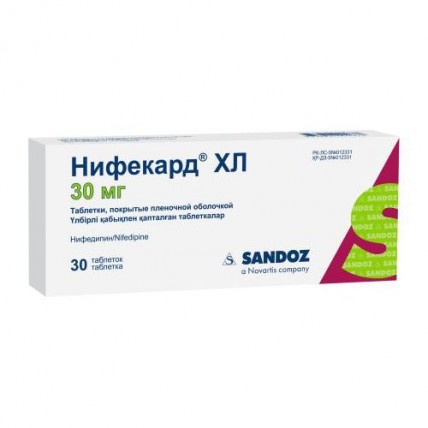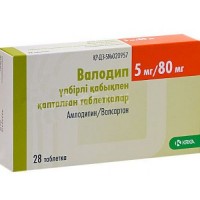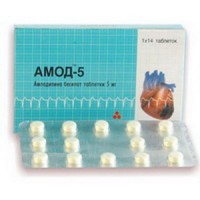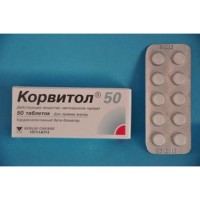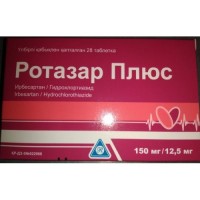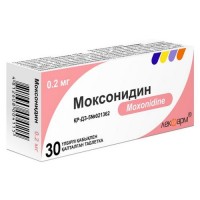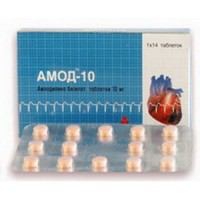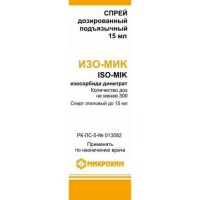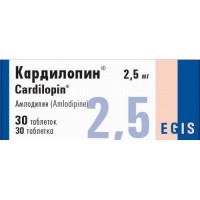Nifecard 30s XL 30 mg film-coated tablets
- $20.90
Out Of Stock
The instruction for medical use
of HL Nifekard medicine
A trade name
Nifekard of HL
the International unlicensed
name Nifedipine Dosage Form
of the Tablet, film coated, 30 mg, 60 mg
Structure
One tablet contains
active agent - mg nifedipine 30.0 or 60.0,
excipients: povidone, sodium lauryl sulfate, gipromelloza, ludipress, talc, magnesium stearate,
structure of a cover: gipromelloza phthalate, triethyl citrate, hydroxypropyl cellulose, makrogol 400, titan dioxide, ferrous oxide (yellow).
The description
of the Tablet from brownish-yellow till pale brownish-orange color, round, biconvex, film coated, with the squeezed-out inscription NDP 30 or NDP 60 on one party.
Pharmacotherapeutic group
Blockers of slow calcium channels selection with primary influence on vessels.
Dihydropyridinic derivatives.
ATC C08CA05 code
The pharmacological
Pharmacokinetics Absorption Nifedipine properties is quickly and almost completely soaked up after oral administration. Linking with proteins of blood plasma of 90%. The period of semi-elimination is about 2 hours. It is removed, generally by kidneys in the form of inactive metabolites.
NifekardHL owing to the slowed-down release of active component, provides the gradual controlled growth of plasma concentration of nifedipine. Nifedipine reaches steady concentration in blood plasma approximately in 6 hours after reception of each dose of drug and remains at such concentration with insignificant fluctuations within 24 hours.
The pharmacodynamics
represents Nifedipine derivative dihydropyridine. The mechanism of action consists in blockade of slow calcium channels. Inhibits transport of calcium ions through cell membranes of a myocardium or cells of smooth muscles of vessels, without influencing plasma concentration of calcium. Dilatation of arteries and arterioles, reduction of peripheric vascular resistance and, as a result, reduction of arterial blood pressure is result of similar action. Nifedipine causes dilatation of the main coronary arteries and arterioles both in normal, and in ischemic sites of a cardiac muscle and prevents a spasm of coronary arteries. Nifedipine increases supply of a myocardium with oxygen at reduction of oxygen requirement that allows to use drug for treatment of stenocardia.
Indications
& frac34, arterial hypertension
& frac34, the coronary heart disease (CHD), stable, vasospastic stenocardia
the Route of administration and doses
appoint Drug individually. The initial dose of drug makes 30 mg a day once. A pill should be taken without chewing, it is impossible to split up or divide.
Selection of a dose is carried out gradually, with intervals in 7 - 14 days.
The average daily dose is equal 30 mg or 60 mg.
The maximum daily dose - 90 mg.
At necessary drug withdrawal, the dosage gradually decreases before full cancellation.
Side effects
Often
- manifestations of an excessive vazodilatation (asymptomatic decrease in the ABP, feeling of rushes of blood to face skin, a dermahemia of the person, feeling of heat), tachycardia, heartbeat, arrhythmia, peripheral hypostases, retrosternal pains
- a headache, dizziness, increased fatigue, weakness, drowsiness, at long reception in high doses - paresthesias of extremities, a depression, feeling of alarm, extrapyramidal (parkinsonichesky) disturbances (the ataxy, a mask-like face shuffling gait, constraint of movements of hands and legs, a tremor of brushes and fingers of hands, the complicated swallowing)
- in a mouth, a loss of appetite, dyspepsia (nausea, diarrhea or a constipation)
- anemia, an asymptomatic agranulocytosis, thrombocytopenia, a Werlhof's disease, a leukopenia
- difficulty of breath
Is rare
- excessive decrease in the ABP, a syncope, a syncope, stenocardia
- a hyperplasia of gums (bleeding, morbidity, puffiness)
- abnormal liver functions (intra hepatic cholestasia, increase in activity of hepatic transaminases)
- a skin itching, a dieback, exfoliative dermatitis, a photodermatitis
- an arthralgia, puffiness of joints, myalgia, spasms of upper and lower extremities
Very seldom
- a myocardial infarction
- a disorder of vision (including a tranzitorny blindness at the maximum concentration of nifedipine in blood plasma)
- a fluid lungs, a bronchospasm
- a gynecomastia (at elderly patients, completely disappearing after drug withdrawal), a hyperglycemia, a galactorrhoea, increase in body weight
- autoimmune hepatitis
of the Contraindication
& frac34, the profound arterial hypotension (systolic arterial blood pressure is lower than 90 mm Hg)
& frac34, the profound stenosis of the aortal valve
& frac34, chronic heart failure in stages of a decompensation
& frac34, hypersensitivity to nifedipine, components of drug and other derivatives 1.4 dihydropyridines
& frac34, an acute period of a myocardial infarction (within the first 4 weeks)
& frac34, a myocardial infarction with a left ventricular failure
& frac34, unstable stenocardia
& frac34, cardiogenic shock with residual stenocardia (risk of developing a myocardial infarction)
& frac34, a stenosis of the mouth of an aorta or the mitral valve
& frac34, a hypertrophic subaortic stenosis, the profound tachycardia
& frac34, pregnancy and the period of a lactation
& frac34, malignant arterial hypertension
& frac34, heavy disturbances of cerebral circulation, an abnormal liver function and/or kidneys
& frac34, children and teenagers aged up to 18 years
& frac34, when carrying out a hemodialysis (risk of developing of arterial hypotension)
Medicinal interactions
Owing to synergy action is necessary care at simultaneous use of nifedipine and other antihypertensive drugs, beta blockers and nitrates. Co-administration of nifedipine and digoxin increases plasma concentration of nifedipine, therefore, control of plasma concentration of digoxin and, if necessary, digoxin dose adjustment is necessary. Nifedipine reduces Phenytoinum metabolism whereas co-administration of nifedipine with cyclosporine or Cimetidinum can cause increase in level of nifedipine in blood. Co-administration of nifedipine and fentanyl can cause heavy hypotonia therefore, nifedipine cancellation, at least, in 36 hours prior to anesthesia is recommended (if it is possible). At the patients accepting nifedipine, plasma concentration of quinidine can decrease by 50%. Nifedipine causes increase in level of theophylline in blood at co-administration.
Special instructions
With care are appointed to patients with diabetes.
For patients with a serious obstructive coronary disease there is a risk of increase in frequency, weight of manifestation and duration of attacks of stenocardia after intake of nifedipine. In this case drug withdrawal is necessary.
If during therapy Nifekardy HL the patient needs to carry out surgical intervention under the general anesthesia, it is necessary to inform the anesthesiologist on the nature of the carried-out therapy.
During treatment, positive takes when carrying out forward reaction of Koombs and laboratory tests on antinuclear antibodies are possible.
Co-administration of beta blockers or cardiac glycosides needs to be carried out in the conditions of careful medical control as it can cause excessive decrease in the ABP, and in certain cases - aggravation of symptoms of heart failure.
Features of influence of medicine on ability to run the vehicle or potentially dangerous mechanisms
Influence of drug on abilities to concentration of attention (driving of the car, work with mechanisms) is not studied.
Overdose
Symptoms - a headache, a dermahemia of the person, the long significant decrease in the ABP, oppression of activity of sinus node, bradycardia and/or tachycardia, bradyarrhythmia, in hard cases - a loss of consciousness, a coma.
Treatment - prescribing of activated carbon, gastric lavage, restoration of stable indicators of a hemodynamics, careful control of action of the heart, lungs and a secretory system. Owing to high extent of linking with proteins of blood plasma, the hemodialysis is not effective.
Form of release and packing
of the Tablet, film coated, 30 mg and 60 mg No. 30.
Primary packing Alyum. / Alyum.
Secondary packing a cardboard pack together with the instruction for use
Storage conditions
to Store blisters at
a temperature not higher than +25 S. Hranit out of children's reach!
A period of storage
3 years
do not use drug after the expiry date specified on packing.
The Lek Producer pharmasyyutikals of
of Veroshkov 57.1526 Ljubljana
Slovenia
To develop prescription status According to the prescription
of HL Nifekard medicine
A trade name
Nifekard of HL
the International unlicensed
name Nifedipine Dosage Form
of the Tablet, film coated, 30 mg, 60 mg
Structure
One tablet contains
active agent - mg nifedipine 30.0 or 60.0,
excipients: povidone, sodium lauryl sulfate, gipromelloza, ludipress, talc, magnesium stearate,
structure of a cover: gipromelloza phthalate, triethyl citrate, hydroxypropyl cellulose, makrogol 400, titan dioxide, ferrous oxide (yellow).
The description
of the Tablet from brownish-yellow till pale brownish-orange color, round, biconvex, film coated, with the squeezed-out inscription NDP 30 or NDP 60 on one party.
Pharmacotherapeutic group
Blockers of slow calcium channels selection with primary influence on vessels.
Dihydropyridinic derivatives.
ATC C08CA05 code
The pharmacological
Pharmacokinetics Absorption Nifedipine properties is quickly and almost completely soaked up after oral administration. Linking with proteins of blood plasma of 90%. The period of semi-elimination is about 2 hours. It is removed, generally by kidneys in the form of inactive metabolites.
NifekardHL owing to the slowed-down release of active component, provides the gradual controlled growth of plasma concentration of nifedipine. Nifedipine reaches steady concentration in blood plasma approximately in 6 hours after reception of each dose of drug and remains at such concentration with insignificant fluctuations within 24 hours.
The pharmacodynamics
represents Nifedipine derivative dihydropyridine. The mechanism of action consists in blockade of slow calcium channels. Inhibits transport of calcium ions through cell membranes of a myocardium or cells of smooth muscles of vessels, without influencing plasma concentration of calcium. Dilatation of arteries and arterioles, reduction of peripheric vascular resistance and, as a result, reduction of arterial blood pressure is result of similar action. Nifedipine causes dilatation of the main coronary arteries and arterioles both in normal, and in ischemic sites of a cardiac muscle and prevents a spasm of coronary arteries. Nifedipine increases supply of a myocardium with oxygen at reduction of oxygen requirement that allows to use drug for treatment of stenocardia.
Indications
& frac34, arterial hypertension
& frac34, the coronary heart disease (CHD), stable, vasospastic stenocardia
the Route of administration and doses
appoint Drug individually. The initial dose of drug makes 30 mg a day once. A pill should be taken without chewing, it is impossible to split up or divide.
Selection of a dose is carried out gradually, with intervals in 7 - 14 days.
The average daily dose is equal 30 mg or 60 mg.
The maximum daily dose - 90 mg.
At necessary drug withdrawal, the dosage gradually decreases before full cancellation.
Side effects
Often
- manifestations of an excessive vazodilatation (asymptomatic decrease in the ABP, feeling of rushes of blood to face skin, a dermahemia of the person, feeling of heat), tachycardia, heartbeat, arrhythmia, peripheral hypostases, retrosternal pains
- a headache, dizziness, increased fatigue, weakness, drowsiness, at long reception in high doses - paresthesias of extremities, a depression, feeling of alarm, extrapyramidal (parkinsonichesky) disturbances (the ataxy, a mask-like face shuffling gait, constraint of movements of hands and legs, a tremor of brushes and fingers of hands, the complicated swallowing)
- in a mouth, a loss of appetite, dyspepsia (nausea, diarrhea or a constipation)
- anemia, an asymptomatic agranulocytosis, thrombocytopenia, a Werlhof's disease, a leukopenia
- difficulty of breath
Is rare
- excessive decrease in the ABP, a syncope, a syncope, stenocardia
- a hyperplasia of gums (bleeding, morbidity, puffiness)
- abnormal liver functions (intra hepatic cholestasia, increase in activity of hepatic transaminases)
- a skin itching, a dieback, exfoliative dermatitis, a photodermatitis
- an arthralgia, puffiness of joints, myalgia, spasms of upper and lower extremities
Very seldom
- a myocardial infarction
- a disorder of vision (including a tranzitorny blindness at the maximum concentration of nifedipine in blood plasma)
- a fluid lungs, a bronchospasm
- a gynecomastia (at elderly patients, completely disappearing after drug withdrawal), a hyperglycemia, a galactorrhoea, increase in body weight
- autoimmune hepatitis
of the Contraindication
& frac34, the profound arterial hypotension (systolic arterial blood pressure is lower than 90 mm Hg)
& frac34, the profound stenosis of the aortal valve
& frac34, chronic heart failure in stages of a decompensation
& frac34, hypersensitivity to nifedipine, components of drug and other derivatives 1.4 dihydropyridines
& frac34, an acute period of a myocardial infarction (within the first 4 weeks)
& frac34, a myocardial infarction with a left ventricular failure
& frac34, unstable stenocardia
& frac34, cardiogenic shock with residual stenocardia (risk of developing a myocardial infarction)
& frac34, a stenosis of the mouth of an aorta or the mitral valve
& frac34, a hypertrophic subaortic stenosis, the profound tachycardia
& frac34, pregnancy and the period of a lactation
& frac34, malignant arterial hypertension
& frac34, heavy disturbances of cerebral circulation, an abnormal liver function and/or kidneys
& frac34, children and teenagers aged up to 18 years
& frac34, when carrying out a hemodialysis (risk of developing of arterial hypotension)
Medicinal interactions
Owing to synergy action is necessary care at simultaneous use of nifedipine and other antihypertensive drugs, beta blockers and nitrates. Co-administration of nifedipine and digoxin increases plasma concentration of nifedipine, therefore, control of plasma concentration of digoxin and, if necessary, digoxin dose adjustment is necessary. Nifedipine reduces Phenytoinum metabolism whereas co-administration of nifedipine with cyclosporine or Cimetidinum can cause increase in level of nifedipine in blood. Co-administration of nifedipine and fentanyl can cause heavy hypotonia therefore, nifedipine cancellation, at least, in 36 hours prior to anesthesia is recommended (if it is possible). At the patients accepting nifedipine, plasma concentration of quinidine can decrease by 50%. Nifedipine causes increase in level of theophylline in blood at co-administration.
Special instructions
With care are appointed to patients with diabetes.
For patients with a serious obstructive coronary disease there is a risk of increase in frequency, weight of manifestation and duration of attacks of stenocardia after intake of nifedipine. In this case drug withdrawal is necessary.
If during therapy Nifekardy HL the patient needs to carry out surgical intervention under the general anesthesia, it is necessary to inform the anesthesiologist on the nature of the carried-out therapy.
During treatment, positive takes when carrying out forward reaction of Koombs and laboratory tests on antinuclear antibodies are possible.
Co-administration of beta blockers or cardiac glycosides needs to be carried out in the conditions of careful medical control as it can cause excessive decrease in the ABP, and in certain cases - aggravation of symptoms of heart failure.
Features of influence of medicine on ability to run the vehicle or potentially dangerous mechanisms
Influence of drug on abilities to concentration of attention (driving of the car, work with mechanisms) is not studied.
Overdose
Symptoms - a headache, a dermahemia of the person, the long significant decrease in the ABP, oppression of activity of sinus node, bradycardia and/or tachycardia, bradyarrhythmia, in hard cases - a loss of consciousness, a coma.
Treatment - prescribing of activated carbon, gastric lavage, restoration of stable indicators of a hemodynamics, careful control of action of the heart, lungs and a secretory system. Owing to high extent of linking with proteins of blood plasma, the hemodialysis is not effective.
Form of release and packing
of the Tablet, film coated, 30 mg and 60 mg No. 30.
Primary packing Alyum. / Alyum.
Secondary packing a cardboard pack together with the instruction for use
Storage conditions
to Store blisters at
a temperature not higher than +25 S. Hranit out of children's reach!
A period of storage
3 years
do not use drug after the expiry date specified on packing.
The Lek Producer pharmasyyutikals of
of Veroshkov 57.1526 Ljubljana
Slovenia
To develop prescription status According to the prescription
